St Albans squat photos inspire homeless exhibition at new museum
- Published
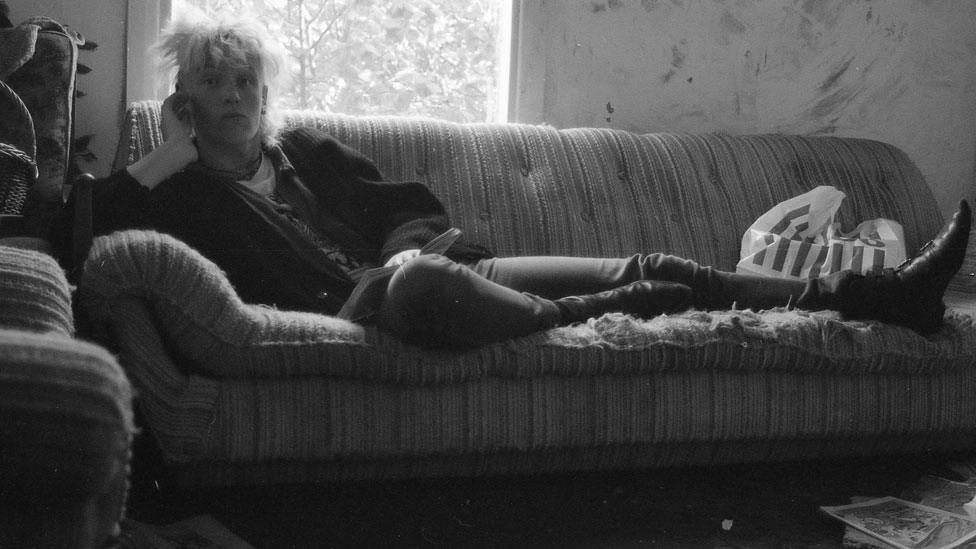
"We were trying to live and not just trying to exist and it worked," the photographer said
A stash of photographs taken in squats in the 1980s and rediscovered in an attic has provided the inspiration for an exhibition about homelessness.
Former St Albans squatter Dave Kotula found about 300 negatives at home when looking for pictures for a reunion.
St Albans Museum said the images depicted "very much a hidden history".
As well as displaying about 70 of the images, its Squatlife, external exhibition will also look at treatment of homeless people in the city over the centuries.
Senior arts officer Grae Wall said: "We instantly knew we wanted to do something with them, they captured a period in time and a story we don't really think has been told very much."
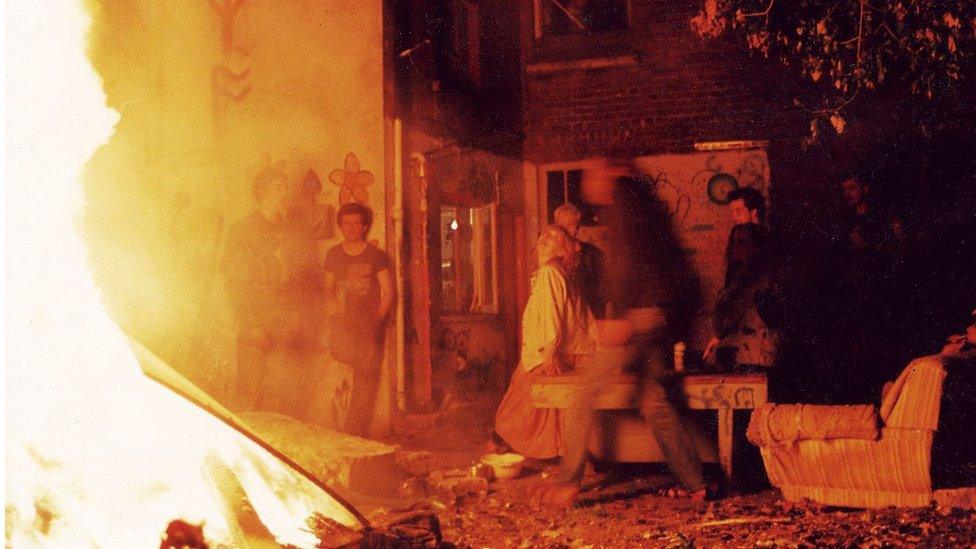
The longest running squat was 29 Lattimore Road where Dave moved to in August 1986 and helped organise the community of people living there

The Lattimore Road squat was in a row of terraced houses and there was an agreement with the owners that they could stay in one as long as they didn't touch the rest - all are now normal residential housing
Squatting was made illegal in England and Wales in 2012, when the Conservative housing minister, and Welwyn Hatfield MP, Grant Shapps, said: "For too long, hardworking people have faced long legal battles to get their homes back from squatters, and repair bills reaching into the thousands when they finally leave... we're tipping the scales of justice back in favour of the homeowner and making the law crystal clear."
'Safe space'
Mr Kotula, 53, first squatted at the age of 18 and lived in several squats in St Albans between 1986 and 1992, documenting the lives of people living there with his 35mm SLR Pentax camera.
Rediscovering the pictures, he contacted St Albans City & District Council's arts team who decided to base an exhibition around them at their museum.
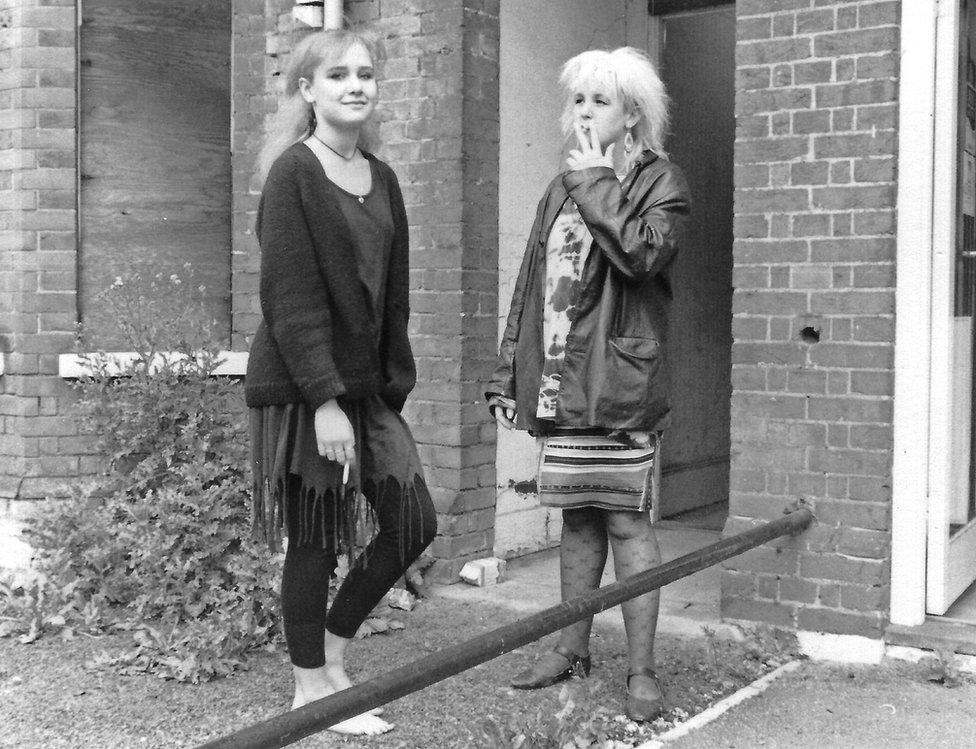
Dave Kotula said the exhibition was "a bit different from usual"
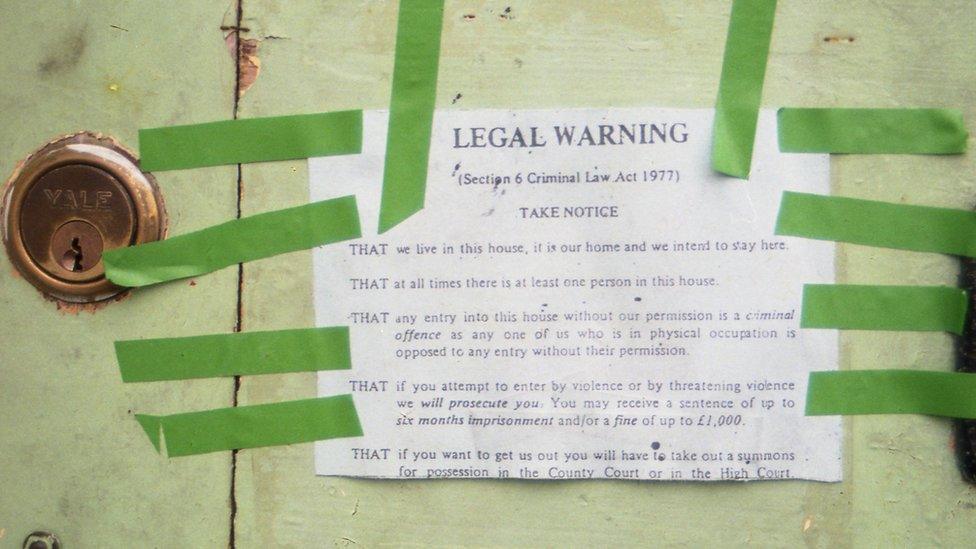
A legal warning notice had to be fixed to all external walls to stop eviction without a court summons
He contacted as many of the subjects as possible for permission to display images of them and to try and tell their stories.
"I hear new stories every day that I'd completely forgotten," he said.
"It's social history of people written out of history, the ordinary people who you don't usually hear about.
"I don't think I've heard a negative comment [about the display] - everyone has said 100% yes, put it in."

Squatting
Squatting is when someone deliberately enters an unoccupied property without permission and lives there without paying rent and without the permission of the owners
The UK has a long history of squatting but there was an explosion in 1960s and 1970s as young people experimented with alternative lifestyles
Legally, homeowners had to go to a civil court to prove the squatters had trespassed before they could be evicted
The Criminal Justice and Public Order Act 1994 allowed those made homeless by squatters to legally break down the door and demand trespassers leave and if they refused, it was an offence
In September 2012, squatting in residential buildings was made illegal
It can now lead to six months in prison, a £5,000 fine or both
Although squatting in non-residential buildings or land is not illegal, it is a crime to damage property
Source: www.gov.uk/ legislation.gov.uk/ BBC

Mr Kotula said he grew up in the area in "a happy and very secure home" so squatting was not an escape.
"We grew up through some terrible times in the 1980s and when I saw my first squat in Gombards, it was about taking back space, being free, having no-one on your case, but at the same time being organised, keeping the house secure and running the house properly.
"Now I am more aware that some people were vulnerable and getting away from terrible situations - for them it was more like a safe space.
"If you're homeless now there aren't places like this to go - it's illegal for a start."
The exhibition also includes a display by the St Albans & Hertfordshire Architectural & Archaeological Society which looks at the treatment of paupers in St Albans over the centuries.
Outside the museum, modern-day photographs of and by people currently homeless in the city will be displayed in the town centre and the theatre company Cardboard Citizens is working with homeless people to create a performance at the Abbey Theatre.
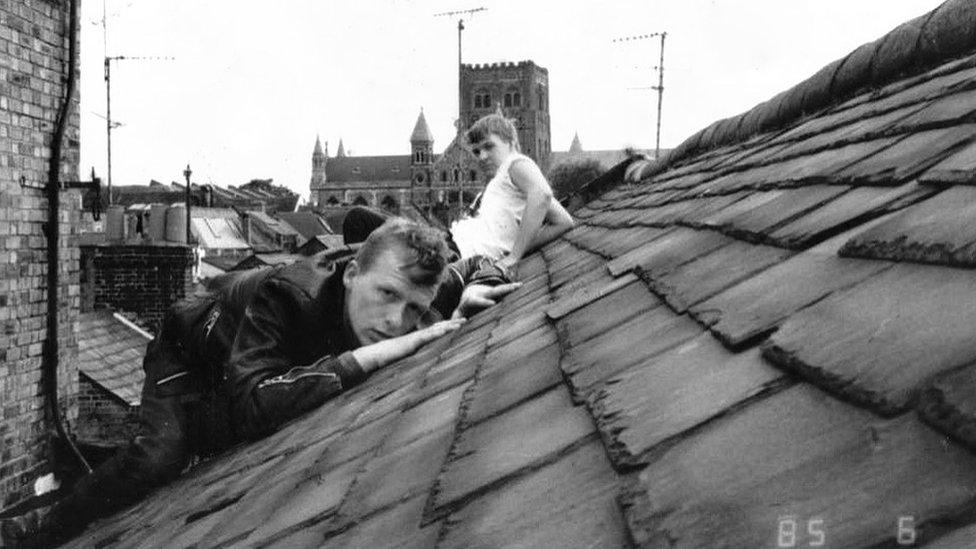
Dave Kotula (in the white top) said that for him, squatting "was about being political", about "taking back space" and "being free"

There were difficulties in squatting such as not knowing how long you could stay somewhere but in general it was "a good time", the photographer said
- Published8 June 2018
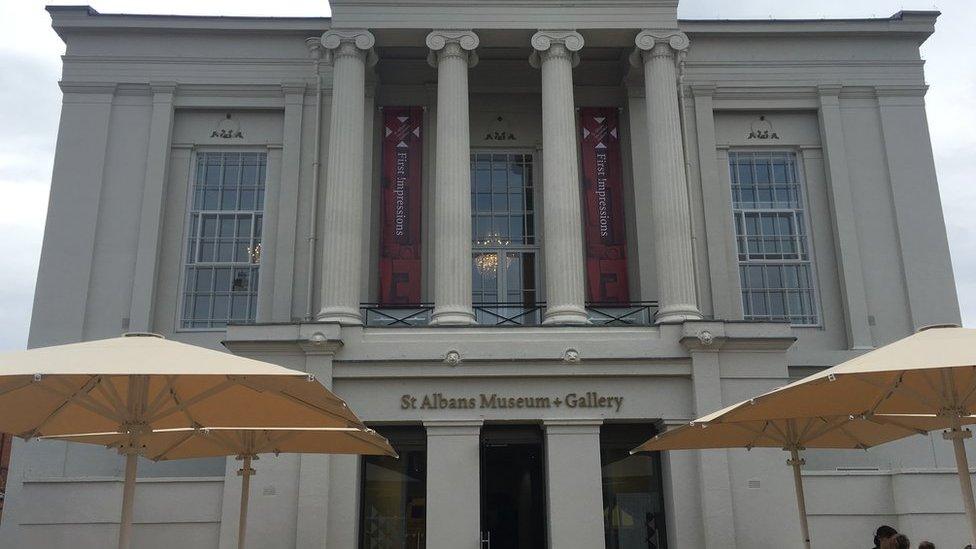
- Published31 August 2012
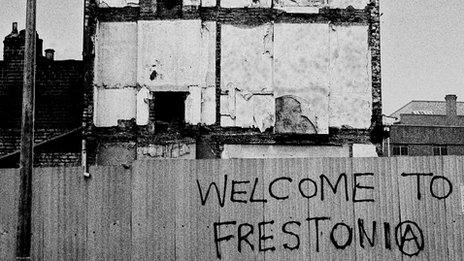
- Published6 July 2011
